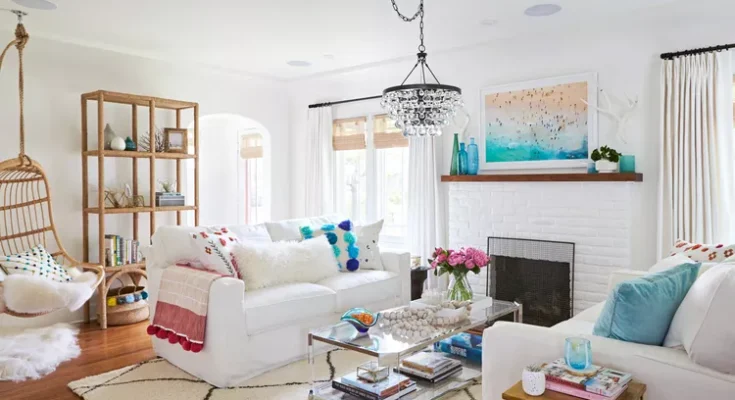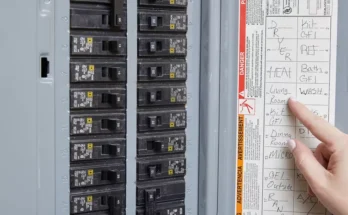Say goodbye to ugly ceiling fans with this hot lighting trend.
The ceiling fan, once considered a design faux pas, has finally gotten a glow-up that even designers can get behind. If you’ve recently scrolled through stylish interiors on social media, chances are you’ve come across a “fandelier.” Part fan, part chandelier, this trending home upgrade cools down a space without compromising aesthetics. Read on to learn all about how you can incorporate one into your own home this summer.
Why Fandeliers Are Trending
The fandelier ticks a lot of boxes when designing a comfortable yet beautiful room. It effectively circulates air, provides light, and serves as a more attractive focal point than a typical ceiling fan. Its current popularity might stem from a renewed interest in sparkly vintage glam or simply the need to cool down a space without sacrificing style.
Traditional ceiling fans come in limited styles, many of which feel dated or bulky. Fandeliers, on the other hand, can be dripping with crystals or designed to mimic nearly any light fixture, from sleek and modern to soft and traditional.
Social media has amplified the trend with creators showing off their favorite fandelier transformations. In some cases, it’s hard to tell there’s even a ceiling fan component until you turn it on and the blades magically appear. Fandeliers are a hit among home influencers for their photo-friendly appeal, since there’s no need to crop out an awkward ceiling fan.
How to Choose the Right Fandelier
Fandeliers come in two variations. They either have hidden blades that retract when turned off or a set of small stationary blades tucked into the fixture.
When shopping, start by measuring your space. Most fandeliers range from 20–50 inches wide, so make sure the size you choose fits your room and ceiling height. For lower ceilings, opt for a flush mount or semi-flush model. Taller ceilings can handle a fandelier with a drop rod and more dramatic detailing.
If your priority is airflow, check the fan’s CFM (cubic feet per minute) rating. Stationary cage designs have smaller blades, providing only subtle circulation. This style would work best in smaller rooms or where airflow is a secondary concern to aesthetics.
Design Styles
Design-wise, think of the fandelier as a room’s statement jewelry, so choose one that enhances your existing room style without overpowering it. Sleek chrome and frosted glass work well in minimalist or midcentury living spaces (think living or dining rooms). Crystal or antique brass styles suit more traditional or glam settings, like a dressing room or a walk-in closet. Matte black or wood-blade hybrids fit industrial or farmhouse aesthetics.
Once you select a fandelier, pull in coordinating finishes through cabinet hardware, side tables, or picture frames. Lastly, if your fandelier has a bold silhouette or sparkle, consider keeping other fixtures subtle to avoid too much visual competition.
Buying and Installation
You can find fandeliers at major retailers like Wayfair, Lowe’s, Home Depot, Pottery Barn, or at boutique websites. Options should pop up with a quick dsearch of “faneliers,” but you can also search for “caged ceiling fans” or “enclosed ceiling fans.”
Fandeliers generally install like standard ceiling fans. However, due to their weight and wiring, hiring a licensed electrician is recommended, especially if you’re upgrading from a basic light fixture and don’t currently have a heavier ceiling fan installed.



